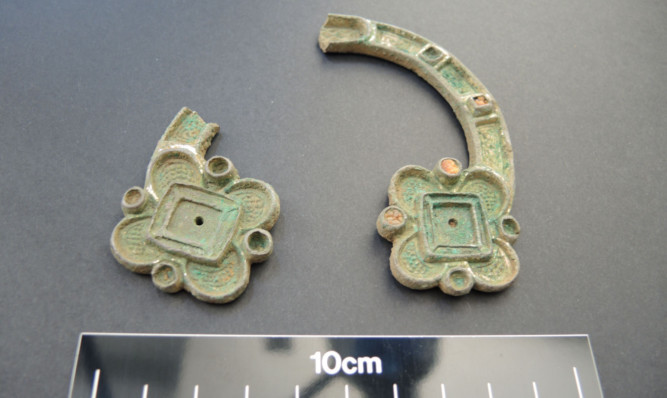An amateur metal detectorist unearthed a rare Pictish brooch from farmland in north-east Fife.
The 8th or 9th Century piece of jewellery, reckoned to be silver, has caused excitement in archaeological circles, with the find considered to be of national importance.
It has been handed over to Scotland’s Treasure Trove Unit and is expected to eventually go on display in a museum.
The finder, whose identity is unknown, is eligible for a reward.
Treasure Trove officer Dr Natasha Ferguson said the early medieval penannular brooch was an exciting object of high-quality craftsmanship.
She said: “It’s quite a rare object. These things don’t come up very often at all, certainly not as a single find.
“When you get something as culturally distinctive as Pictish or early medieval it raises interesting research questions about who would have worn it and how it has ended up there.
“It is a very high status piece it would have been worn by someone to show their wealth. It’s not clear whether it has been deliberately buried as part of a hoard or if it has somehow ended up being dropped and lost.”
Research is being conducted on the brooch, before it is allocated to a museum.
Ms Ferguson added: “Although it looks to be copper alloy we think it is silver that has been gilded, so elements have a gold surface added to give extra brightness. It also has amber insets.
“The condition is very good. It is missing a section but the amber inset and gilt have survived and to be able to see the decorative knotwork without it being too worn is quite interesting.”
While it is the only object of its type to be found at the location which is being kept under wraps to keep treasure hunters away there are similar pieces in a hoard found on St Ninian’s Isle in Shetland.
The law requires finders of objects of archaeological or historical importance to hand them over to the Treasure Trove Unit so they can be preserved for public benefit.
